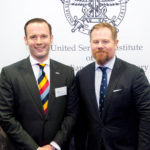#War
#War – Is the enemy more agile, adaptable & situationally aware than us?
The continued success of the Australian Army Blog is good news – especially since our adversaries have been blogging for years. And while we in the West are guilty of dismissing enriched media[1] as the domain of cyber geeks and Twilight fans, our opponents have quite literally been developing ‘killerapps’.
It is perfectly understandable that Western militaries dismiss enriched media, after all, its use in calling people to action has rarely amounted to more than “slactivism”. Over 1.3 million ‘likes’ didn’t lead to the capture of Kony2012, and even the most powerful tweeters have been unable to #BringBackOurGirls.
But many emerging players have not been so quick to dismiss this new technology, nor have they relegated it to the role of propaganda, instead its use has evolved from an information operations tool to a collection, targeting and command and control (C2) system. Al Qaeda’s use of social media to garner moral (and financial) support since its inception seems crude compared to its use by the Syrian Army in kill or capture missions. More recently Libyan revolutionaries conducted air-ground coordination and targeting against regime positions using geo-tags while the Mumbai terror attacks’ C2 was provided in real-time, via twitter, from hundreds of miles away. Given that Amazon currently uses enriched media integrated with cheap technology to deliver books; its use by combatants to deliver kinetic effects is imminent. Enriched media is becoming entrenched as a durable and pervasive characteristic of the modern battle-space.
The face of future battle: Accessible, Agile and Auto-synchronising
The next battlefield, David Kilcullen argues, will be Urban, Littoral and Connected. While the Australian Army has made an intellectual and materiel investment in preparing for the challenges of urban terrain and amphibious manoeuvre, it has yet to fully grasp the implications of an auto-synchronising, hyper-connected threat. The 21st Century has seen the intersection of auto-synchronous human networks (of the sort described by Kilcullen, Ferguson et al.) and highly accessible, agile technology. This convergence of human and technological factors is already being harnessed by an array of actors as a force multiplier.


In the summer of 2010 a small group of activists set about overcoming security forces to penetrate police lines and disrupt Toronto’s G20 meeting. Protest leaders used off-the-shelf micro-UAVs jerry-rigged with video cameras to live stream full-motion video, to a series of distributed command nodes in order to develop a geo-referenced common operating picture. This capability, still an aspiration for the Australian Army, was fused with human intelligence to identify police positions, routes and reserves.




In Toronto high levels of protestor situational awareness made it easy to detect where and when the police reserve was decisively committed. Blackberry private message groups, favoured by London rioters and Libyan commanders alike, were used to direct the protestors’ reserve through the ensuing gap and straight into the secure ministerial facility. The superior agility provided by enriched media meant 20 000 security personnel were overwhelmed by fewer than half that number of protestors.
While its use to date has been predominantly in sub-conventional or insurgent actions, enriched media is already being integrated by major actors in the hybridised conflicts that are being fought as this article is written. Technical solutions will be necessary to address some of the questions that accessible and agile technology poses, such as:
- How do we fuse the high volumes of classified data the next generation of ADF platforms (JSF, Land 400, Wedgetail, etc.) collect with the unclassified, ungoverned manoeuvre space of the World Wide Web?
- How does Army respond to the array of tier-1 & 2 UAS operating in urban terrain?
- Does the Army have the technical and language skills to operate in this environment?


Written by Andrew Kirby
———–
This article was originally published by the Australian Army’s Land Power Forum 14 June 2016:
http://www.army.gov.au/Our-future/Blog/Articles/2016/06/Hashtag-War
[1] Enriched media: “technologies that enable users to engage in interactive communication, with the ability to see, hear and interact with multiple communication streams synchronously or access them asynchronously”



